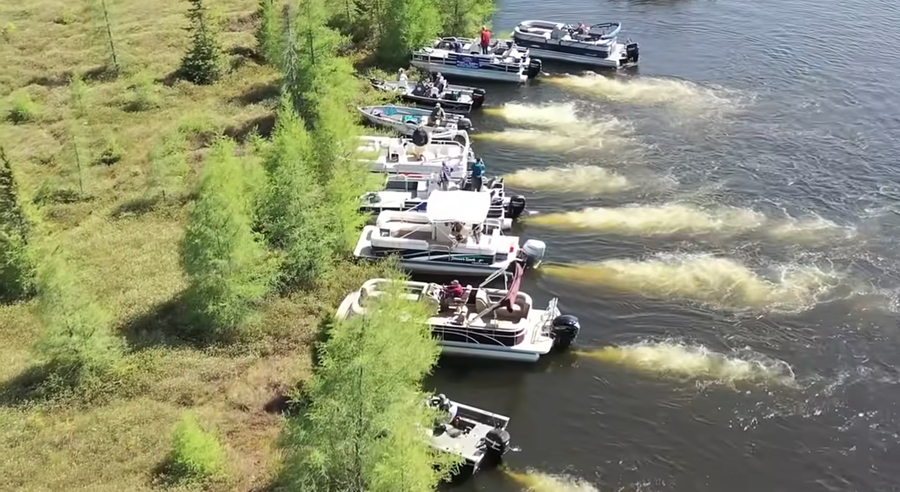It looks like an island; it has a thriving ecosystem of tall Tamarack trees, vibrant greenery, and local fauna, and it’s surrounded by water on all sides. But teams of small boats with the winds at their backs don’t usually push islands around when they get in the way… and this “island” keeps drifting into shore.
On Wisconsin’s Lake Chippewa, local boat owners came together to gently push this floating natural habitat—a protected bog of tangled peat, roots, mud, and other plant matter—away from the lake’s bridge. Via Northern News Now, “the bridge is the only passage between the East and West sides of the flowage.”
The community’s annual “housekeeping” chore was documented in this May 2022 AirFox Photography video. Watch how the boats move from one side to the other to help control the bog’s trajectory. And how are they trying to move it when the boats push from opposite sides?
The team efforts lasted from 9:55am to 12noon or pm—not am, as labeled by the video. Unfortunately, mid-video, the floating bog stops moving. “Despite their efforts,” Northern News Now reports, “the bog got stuck on a pile of rocks.”
“‘You can go all summer, and sometimes it doesn’t happen. But when we move it, you gotta get it kind of in the right spot, or it can be back in in a couple of days,’ said Greg Kopke, a local homeowner.
Since they were unable to get the bog where they wanted it, it’ll likely be back at the bridge in just a few days, and the boats will be back to try and push it away once again.”
A close up of the boats also provides a look at the bog:
Bogs that form on lakes are biodiverse freshwater wetlands that are often found in cool, northern climates. More about beneficial bog ecosystems from National Geographic:
“Insects thrive in muddy bogs and consume plants, fungi, and pollen… Bog plants and insects support a wide variety of other organisms. Amphibians, such as frogs, salamanders, and newts, thrive in insect-rich bogs.
“Peat bogs are carbon sinks, meaning they store enormous amounts of carbon, in a process called carbon sequestration. Carbon sequestration is a process where carbon dioxide is captured and removed from the atmosphere… By creating new bogs, millions of tons of carbon are sequestered. The world’s peat bogs sequester more than 200 billion tons of carbon.”
Watch these related peat and Wisconsin videos next:
• Why are peatlands so important?
• How can nature be used as a tool to restore ecosystems?
• Chief Oshkosh and a history of Menominee Forest conservation
• Gaylord Nelson and how Earth Day got started
h/t Kottke.
Curated, kid-friendly, independently-published. Support this mission by becoming a sustaining member today.



